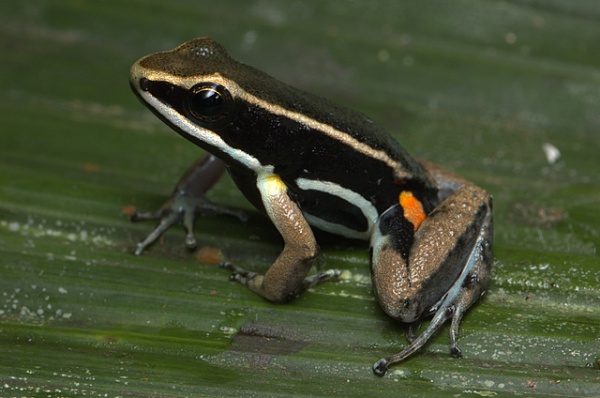Facts About Brilliant-thighed Poison Frog
Allobates femoralis is a captivating frog species from the Aromobatidae family, indigenous to several South American countries including Bolivia, Brazil, Colombia, Ecuador, French Guiana, Guyana, Peru, and Suriname. These frogs prefer tropical lowland forests and predominantly inhabit the forest floor.
Male Allobates femoralis typically reach a length of about 28-33 mm, while females are generally slightly larger. They are easily identifiable by their dark brown or black backs, dark brown limbs, black throats, and white bellies adorned with black markings. Additionally, they exhibit distinctive coloration features such as dorso-lateral stripes, white ventro-lateral lines, and patches of orange-yellow or orange on certain parts of their body.
These frogs are widely distributed throughout the Amazon Basin and other tropical regions of eastern South America, mostly residing below 300 meters in elevation. However, they can be found at elevations up to 1,000 meters in Colombia and Ecuador.
Allobates femoralis are diurnal and primarily terrestrial, hunting small insects such as beetles, crickets, roaches, and ants. The juveniles, on the other hand, primarily consume springtails. Their breeding season spans from November to April, peaking in January or February. Males are territorial and will court females over several days before the females lay clutches of approximately eight to seventeen eggs in leafy nests. The males then assume the role of protectors, guarding the eggs and later transporting the hatched tadpoles on their backs to water.
In terms of conservation, Allobates femoralis is thriving. The IUCN lists the species as "Least Concern" due to its broad distribution, common presence across its range, adaptability to habitat changes, stable population trends, and absence of significant threats.

 Colombia
Colombia